Germany's light tanks in the interwar period
After the end of the First World War, Germany, under the terms of the Treaty of Versailles, was forbidden to develop tanks and have tank units in the army. Despite all the bans, the command of the German army was well aware of the prospects of a new type weapons for ground forces and sought to keep up with their competitors.
The military command, which talked about the role of tanks in the categories of the First World War, in 1925, issued three firms (Rheinmetall, Krupp and Daimler-Benz) to develop a new tank for reasons of secrecy called the Grosstraktor (Bolshoi tractor").
Firms could produce tanks under this name, but there was no place to test them, since Germany was under the control of the winning countries. The German political and military leadership agreed to a deal with the Soviet Union, since these two countries, although for various reasons, were isolated from the countries of the West.
In 1926, Germany signed an agreement with the Soviet Union on the creation of a tank school and a Kama test range near Kazan for training Soviet and German tank crews and testing German tanks, which operated until 1933.
Such a deal was also beneficial for the Soviet Union, since its school of tank building did not yet exist and it was possible to get acquainted with the latest German developments. In 1933, the contract was terminated, as the Nazi leadership came to the leadership in Germany, and it no longer sought to hide its revenge-seeking plans.
Three firms in 1928-1930 produced two tanks each, and all six Grosstraktor tanks were sent to tests in the Soviet Union.
Tank "Grosstraktor"
Manufactured tanks were not fundamentally different from each other. According to the layout, they were accustomed to classic English “rhombuses”, with caterpillars covering the entire hull of the tank. Then it was believed that this design allows for a higher throughput of the tank.
In front of the building there was a department of management, on the roof of which two cylindrical turrets with viewing slots were installed. Behind it was located the main combat compartment with the main tower, designed for 3-s people, then the engine-transmission and auxiliary combat compartment in the stern with a machine-gun turret. The weight of the tank, depending on the manufacturer, was (15-19,3) tons, the crew of the 6 man.
The tank used the principle of diversity of weapons for two towers installed in different parts of the tank. The armament consisted of an 75-mm short-barreled KwK L / 24 cannon mounted in the main turret and three 7,92-mm machine guns, one each in the main turret, aft turret and body.
The tank reservation was weak, the forehead of the 13 mm hull, the 8 mm flange, the roof and the bottom - 6 mm. All six samples were made not of armor, but of mild steel.
The Mercedes DIV engine with a power of 260 hp, providing 40 km / h speed and 150 km cruising range, was used as a power plant.
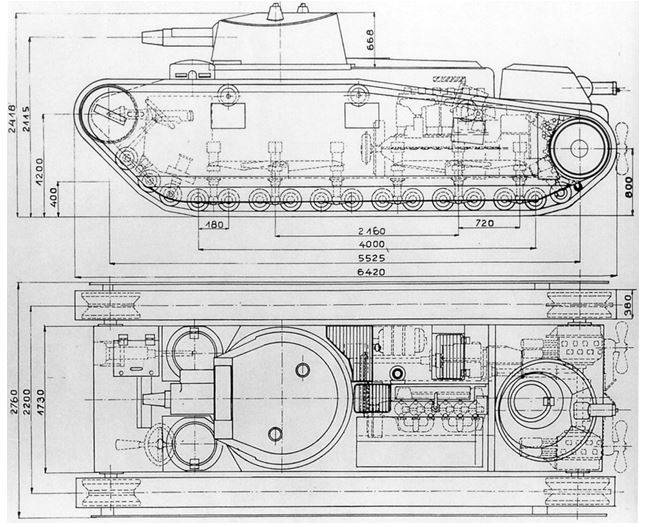
The chassis of the tanks, depending on the manufacturer, was slightly different, consisted of small-diameter support rollers, interlocked in trucks, three support rollers, a front guide and rear drive wheel.
Tanks before 1933, were run-in on the Soviet range "Kama". The armament and armor of the tanks were not tested. The running-in process constantly stopped due to engine, transmission and chassis failures, which showed low reliability. According to the test results, it was decided to abandon the diamond-shaped chassis, and conclusions were also made about the feasibility of developing a specialized powerplant for the tank and transferring the drive wheel to the front of the hull to avoid dropping the track when moving on soft ground. Subsequently, the front arrangement of the drive wheel was used in almost all German tanks.
They also decided to abandon the idea of spaced weapons, the division of the combat compartment into the main and auxiliary with a machine gunner in the stern often led to its isolation, since it could hardly interact with the rest of the crew.
After the return of the tanks to Germany, they were used as training until 1937, and then were written off. Further development of tanks with such a layout in Germany have not received.
Leichttraktor. Light tank
Following the development of the Grosstraktor in 1928, the military command ordered the development of a light tank weighing up to 12 tons. Four prototypes of the tank were manufactured in the 1930 year and also sent to the Soviet Union for testing at the Kama test site, where they were tested before the 1933 year.
The tank was developed on a competitive basis by the firms Rheinmetall and Krupp. In principle, they did not differ, the differences were mainly in the chassis.
The tank was the weight of the 8,7 (8,9) ton with the crew first 3 man (driver, commander, radio operator). Then the crew was increased to 4 people - they entered the loader, because they came to the conclusion that the combination of the functions of the commander and the loader does not ensure the commander the performance of his functions.
The layout in the front of the engine compartment was located in the middle part of the left was a mechanic - the driver, to his right radioman. A small turret with viewing slots was installed above the driver’s head, providing the commander with an overview of the terrain.
The fighting compartment with a rotating turret was shifted back, the commander and loader were placed in the turret. Two observation periscopic devices were installed on the roof of the tower for observation, and there was an evacuation hatch in the rear of the tower. The landing of the crew in the tank was carried out through the hatch in the stern of the tank. The tank hull was riveted-welded and assembled from sheets of armor steel with a thickness from 4 to 10 mm.
The armament of the tank consisted of an 37-mm KwK L / 45 cannon and an 7,92-mm Dreyse machine gun mounted in the turret.
The Daimler-Benz M36 36 hp engine was used as a power plant, providing a speed of the order of 40 km / h and a power reserve of 137 km.
The samples of the Rheinmetall tank used a chassis from a tracked tractor, consisting of 12 dual support rollers, interlocked two in six trucks, one tensioner and two supporting rollers, a front guide wheel and a rear drive wheel. To protect the elements of the chassis was installed side armored screen. On the samples of the Krupp tank, the chassis consisted of six dual small-diameter support rollers with vertical spring damping, two support rollers, a front guide and a rear drive wheel.
After running in the tanks at the Soviet Kama test site, many shortcomings were identified, mainly on the undercarriage. The location of the drive wheels in the back was considered not a good solution, since it often led to the dumping of the tracks, there were claims to the rubber-metal track and to the design of the suspension.
After the liquidation of the Kama tank school in 1933, the tanks were sent to Germany, where they were used as training tanks and the Leichttraktor project was not developed further.
Light tank Pz.Kpfw.I
After the Nazis came to power in 1933, they no longer concealed their intentions to develop tanks and arm the army with them. The main focus was not on the firepower of the tank, but on its maneuverability in order to ensure deep breakthroughs, encirclement and destruction of the enemy, subsequently laid the basis of the blitzkrieg concept.
By order of the military in the 1931 — 1934, the Krupp and Daimler-Benz firms developed the light tank Pz.Kpfw.I. It was the first German tank mass-produced after the end of the First World War. It was produced from 1934 to 1937 years, in total 1574 samples of this tank were produced.
The layout of the tank was with the front of the transmission, the power plant in the stern of the tank, combined control unit with a fighting compartment in the middle of the tank and the turret located above the fighting compartment. The weight of the tank 5,4 tons, the crew of two people - a driver and commander-gunner.
A superstructure was installed above the tank hull, which served as a box for the turret in which the commander was stationed. The driver's seat was located on the left side of the case. The superstructure of the corps consisted of an octahedral box in shape, located above the combat and engine compartments. Visibility to the driver was provided with hatches with armored covers in the superstructure front sheet and in the bevelled armor plates on the left side. A double-wing hatch on the left side of the turret box was intended for the driver’s landing. The tank tower had a conical shape and was located in the right part of the fighting compartment on a roller support.
Tank Pz.Kpfw.I had anti-bullet reservation, providing protection only from small arms and shell fragments. The tank hull was welded, individual parts and components were attached to the hull with bolts and rivets.
The vertical sides of the hull and the underside of the box, the front sheets and the hull sterns were 13 mm thick. The front middle armor plate and the superstructure roof had a thickness of 8 mm, and the bottom of the tank 5 mm. In this case, the frontal lower armor plate was located at an angle of 25 degrees, and the average 70 degrees. The thickness of the armor of the tower was also 13 mm, and the roof of the tower 8 mm.
The armament of the Pz.Kpfw.I consisted of two 7,92-mm MG13 machine guns. In the later models, new Rheinmetall-Borsig MG 34 machine guns were installed. Machine guns were installed in a twin installation in a rocking armor on the axles in the frontal part of the tower, while the tip of the right machine guns could be shifted relative to the left using a special device.
The modification of the Pz.Kpfw.I Ausf.A tank was equipped with a Krupp M305 XHUMX hp engine, providing 57 km / h speed and 37 km cruising range. On the Pz.Kpfw.I Ausf.B modification, the Maybach NL 145 Tr engine was installed with a capacity up to 38 l. with. and providing better tank performance.
The chassis of the tank on each side consisted of a front drive wheel, four single rubberized rollers, a rubberized sloth lowered to the ground and three rubberized supporting rollers. The suspension of the road wheels was mixed, the first road wheel was individually suspended on a balance bar connected to a spring and a hydraulic shock absorber. The second, third, fourth support rollers and the sloth were interlocked in pairs in trolleys with suspension on leaf springs.
In the second half of the 1930-x Pz.Kpfw.I was the basis of the German armored forces and remained in this role until the 1937 year, when it was replaced by more advanced tanks. Combat use of the tank took place in the 1936 year during the Spanish Civil War, later the tank was actively used at the initial stage of the Second World War until the 1940 year. Before the attack on the USSR in 1941, the Wehrmacht had 410 with efficient tanks Pz.Kpfw.I.
Light tank Pz.Kpfw.II
In addition to the Pz.Kpfw.I light machine-gun tank, in 1934, demands were made to develop a light tank weighing up to 10 tons, equipped with a 20mm gun and enhanced armor. It was proposed to develop a "transition type tank" as a temporary measure until the appearance of more sophisticated samples.
The tank was developed in the 1934 year and was produced in various versions in the 1935-1943 years. At the beginning of the Second World War, such tanks were 38 percent of the tank fleet of the Wehrmacht.
The tank had an arrangement with the placement of the transmission compartment in front of the tank, the integrated control unit and the fighting compartment in the middle of the hull and the power plant in the stern of the tank. The crew of the tank consisted of three people: the driver, loader and commander, the weight of the tank was 9,4 tons.
On the roof of the hull there was a turret box on which the tower was installed. In front of the box, which had the shape of a truncated triangle in the plan, there was a driver's seat with three viewing instruments.
The position of the turret on the tank was asymmetrical, shifted from the longitudinal axis to the left. In the roof of the tower was a double hatch, which, when upgraded, was replaced by a commander's turret. In the sides of the tower there were two inspection devices and two ventilation hatches, closed by armored covers. For landing the driver had a single door hatch in the upper front hull plate. There was a partition between the fighting compartment and the engine compartment, the engine was located on the right, and on the left a radiator and a cooling system fan.
By design, the hull and tower of the tank were welded. Reservation of the tank was enhanced, the thickness of the armor plates of the forehead and sides of the hull, the turret was 14,5 mm, the bottom, the roof of the hull and turret - 10 mm.
The 20-mm KwK 30 L / 55 cannon and the 7,92-mm Dreise MG13 machine gun mounted in the turret were used as weapons. In the later models, more advanced KwK 38 guns and MG-34 machine guns of the same calibers were installed.
The Maybach HL 62 TR engine with a power of 140 hp, providing speed on the 40 km / h and power reserve 190 km, was used as the power plant.
The chassis of these machines, as applied to one side, consisted of five road wheels on a spring suspension, four support rollers, a front drive wheel and a rear idler wheel. The MAN undercarriage was somewhat different and consisted of three two-roll trolleys and a longitudinal beam, to which the external ends of the balancers of the support rollers were attached.
In the process of production of the tank before the war, several modifications of a, b, c, A, B, C, D were released. Modifications E, F, G, H, J were developed and produced during the Second World War. Of the pre-war modifications, the majority was associated with the design modifications of the machines, of the fundamentally different ones, Ausf should be highlighted. C and Ausf. D.
1938 modification of the year Pz.Kpfw.II Ausf. C, was distinguished by a frontal armor reinforced up to (29 - 35) mm and installation of a commander's turret.
1939 modification of the year Pz.Kpfw.II Ausf. D was called "speed" and differed the modified form of the hull, the new engine 180 hp and chassis with individual torsion bar suspension.
1941 modification of the year Pz.Kpfw.II Ausf. F, differed strengthened in comparison with Ausf. With the reservation, installation of the gun 2 cm KwK 38 and improved viewing devices.
1940 modification of the year Pz.Kpfw.II Ausf. J, represented the concept of a reconnaissance tank with increased armor to 80 mm frontal armor, 50 mm sides and aft, 25 mm roof and bottom. The weight of the tank increased to 18 tons, the speed decreased to 31 km / h. It was released all 30 tanks of this modification.
Before the start of the war, the Pz.Kpfw.II was already not a powerful enough battle tank, in the first battles it turned out to be weaker in armament and booking of the French R35 and H35, the Czech LT vz.38 and the Soviet T-26 and BT tanks of the same class, while the tank did not have serious reserves for modernization. The KwK 30 L / 55 cannon showed high accuracy of firing, but clearly had insufficient armor penetration.
During the war, PzKpfw II was used mainly against infantry and lightly armored vehicles. The maneuverability and the reserve of the tank, especially in the conditions of the war in the USSR, were insufficient. In the later stages of the war, if possible, the tank was not used in combat, but mainly for reconnaissance and security services. According to various sources, a total of various modifications of PzKpfw II from 1994 to 2028 samples were made.
To be continued ...
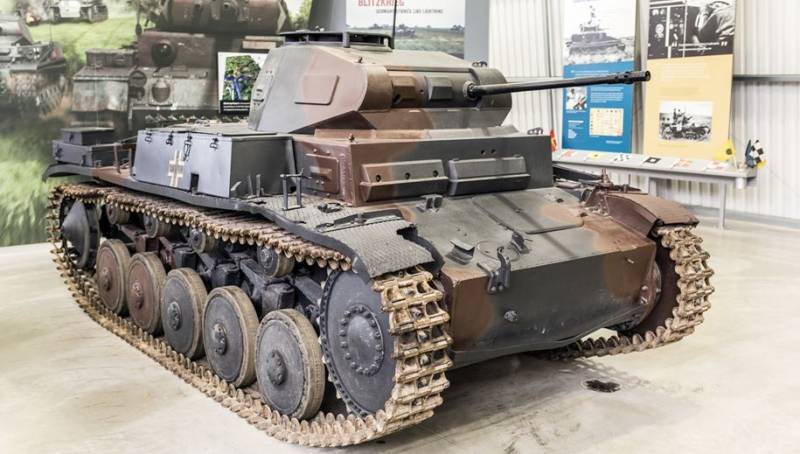
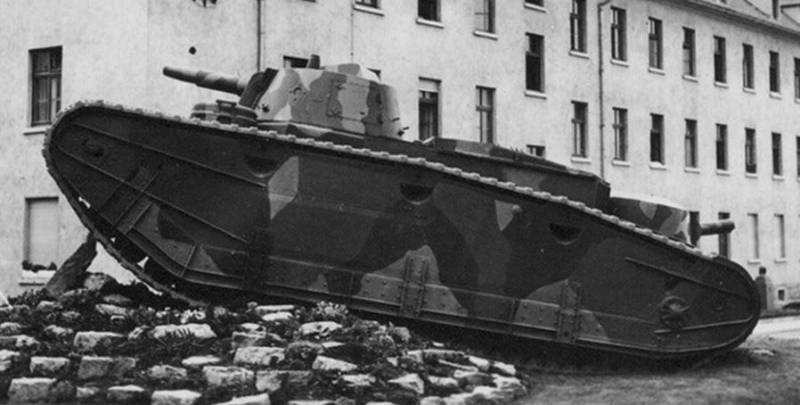
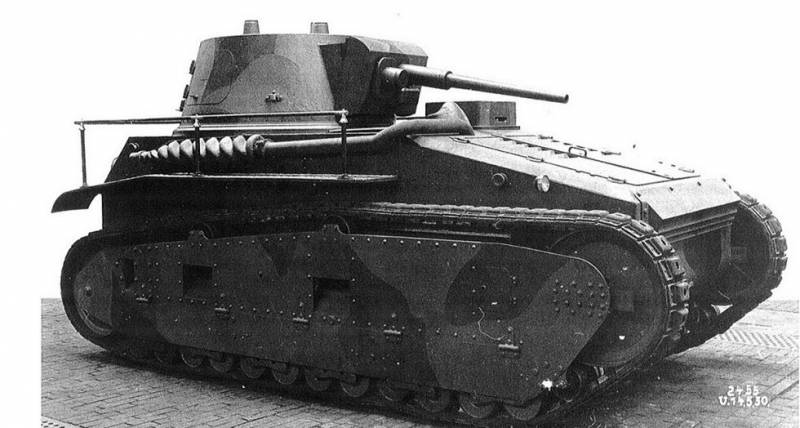
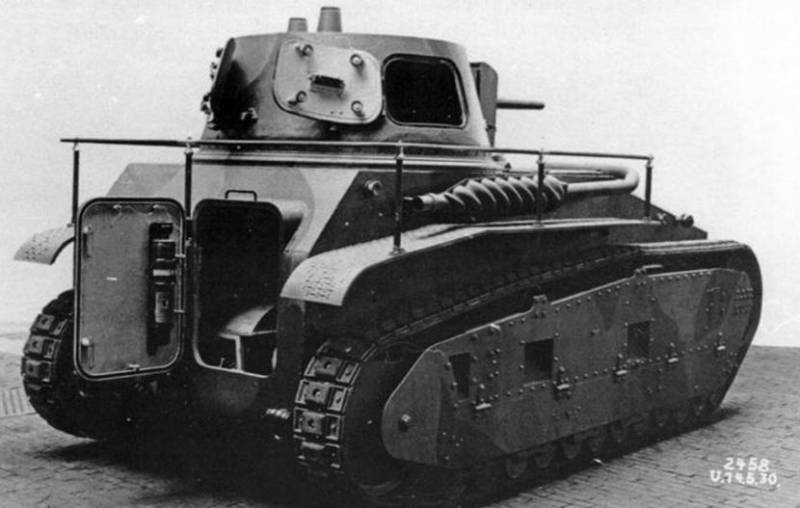
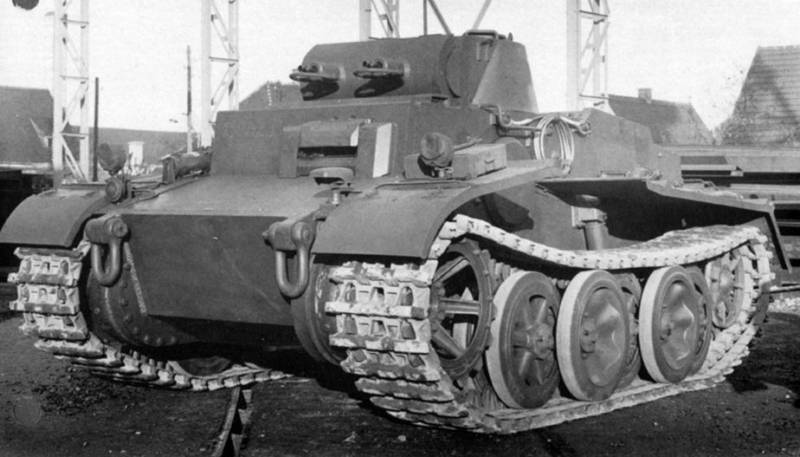
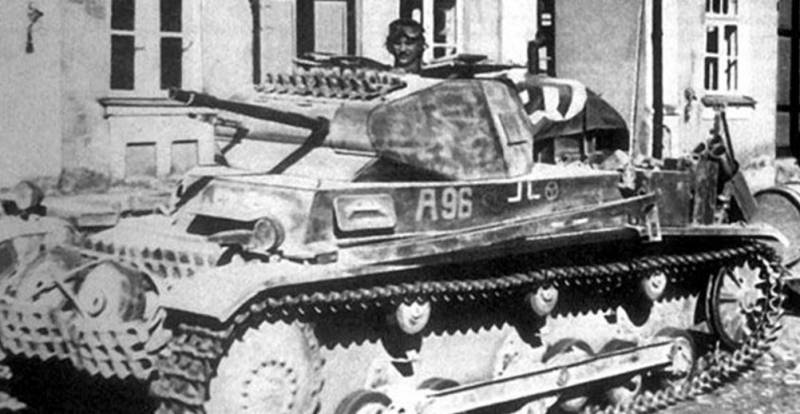
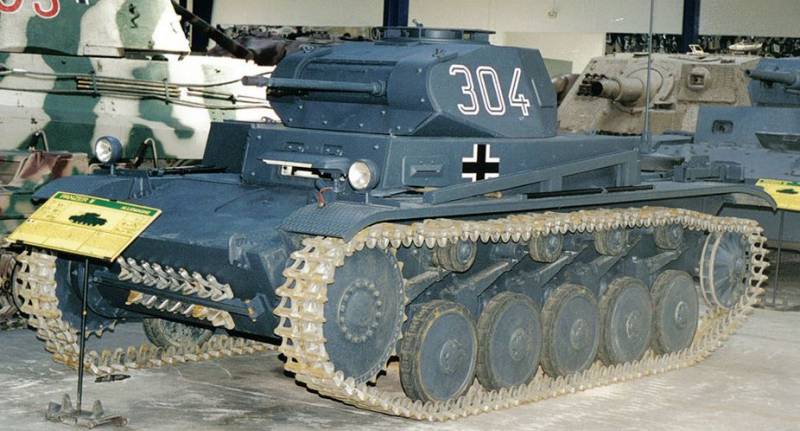
Information